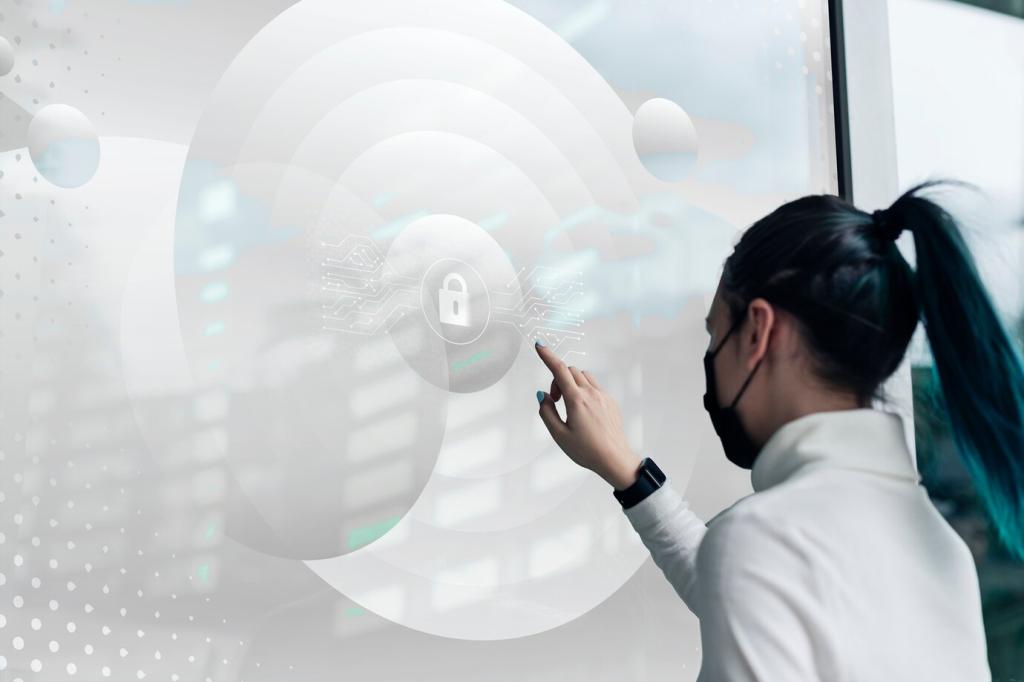Biometric home security solutions are poised to revolutionize how we protect our homes and loved ones in the coming years. By leveraging the unique biological traits of individuals, these advanced systems offer heightened security, unparalleled convenience, and robust privacy protection. As biometric technologies continue to evolve and integrate with smart home ecosystems, homeowners can expect a new era of security that balances innovative features with user-centric design. This page explores the dynamic future of biometric solutions in residential security, shedding light on emerging trends, potential advantages, and challenges ahead.

Next-Generation Recognition Methods
Future biometric solutions for home security are moving beyond simple fingerprint or facial recognition. Cutting-edge methods such as vein mapping, iris scanning, and behavioral biometrics are being refined for seamless, contactless use in residential settings. These technologies tap into deeper layers of identification, ensuring that only trusted individuals can access sensitive areas of the home. The accuracy and speed of these innovations mean faster, smoother entry, reducing the typical points of friction experienced with traditional locks or keypads. As a result, authentication becomes not only more secure but also more user-friendly for diverse household members.

Artificial Intelligence and Machine Learning Integration
Artificial intelligence (AI) and machine learning (ML) are becoming central to future biometric security systems at home. Machine learning algorithms continually analyze and interpret biometric data, enabling systems to adapt to slight changes in users’ appearance or behaviors. AI-driven analytics can detect anomalous activity—such as attempts to spoof biometric sensors or unusual patterns at entry points—prompting instant alerts or countermeasures. The adaptability of AI-based systems ensures long-term reliability, helping homeowners trust that their properties are protected against evolving threats as technology advances.

Enhanced Multimodal Systems
The future of home security lies in multimodal biometric systems that employ multiple recognition methods simultaneously. These solutions might combine fingerprint, voice, and facial data for added layers of corroboration, drastically reducing the risk of unauthorized entry. Such redundancy is especially valuable in scenarios where environmental factors—like poor lighting or glove use—could impact a single modality’s effectiveness. With seamless integration, homeowners enjoy a blend of convenience and heightened security, tailored to a range of access needs from daily routines to emergency situations.

Frictionless Entry and Personalized Access
Biometric security solutions are redefining what it means to enter and move within the home. Residents and authorized guests can expect seamless, touch-free entry without needing keys, codes, or cards. Systems will recognize inhabitants instantly, personalizing access permissions for different members of the household. For instance, children, guests, or service workers can receive tailored access, while all activity is securely logged. Such personalized, frictionless systems enhance convenience, reduce lost or shared keys, and cultivate a sense of both ease and safety.

Accessibility for Diverse Users
Future biometric solutions recognize the diversity of homeowners, meeting accessibility needs for people of all ages and abilities. Voice recognition and adaptive interfaces cater to those with mobility or dexterity challenges, while settings can be adjusted for visual or auditory impairments. By addressing these variations, biometric systems ensure no resident or guest feels excluded or inconvenienced. Intuitive setup and user education also lessen the technology learning curve, making advanced security accessible and beneficial for multigenerational households.
Security and Privacy Enhancements
Safeguarding sensitive biometric data is paramount. The future of home security lies in encrypted, decentralized storage systems, often using advanced local storage or blockchain technologies rather than cloud-only solutions. Biometric templates are encrypted end-to-end, dramatically reducing vulnerability to hacking or unauthorized access. Even if one device is compromised, decentralized structures prevent widespread data theft. These measures give homeowners peace of mind that their identity—and those of their loved ones—remains protected from external intrusion.

